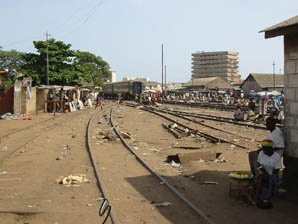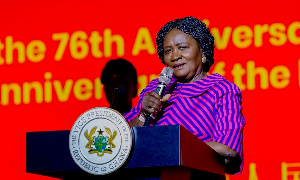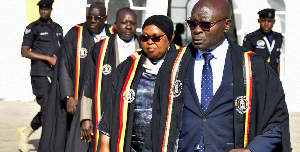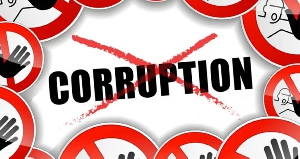Ghana's railway sector is in collapse and does not befit the country's lower middle-income economy, according to John Kwakye, a senior economist with the Institute of Economic Affairs (IEA).
“The railway sector has virtually collapsed. How can you call yourself a middle-income country when you don’t have a railway system? We are far behind Malaysia and South Africa,” he said.
Dr Kwakye, who was speaking recently to journalists in Accra, said Ghana needed to spread growth in the non-oil-sectors especially in manufacturing.
“That is where the job creation is going to come from. It’s not going to come from oil; not in immediate future," he said.
He said jobs were not going to come from services as expected, adding that with the high concentration of the labour force in the agricultural sector, it would only be proper to look at other sectors.
Dr Kwakye therefore advised government to employ strategic measures that could bring life into Ghana’s dormant railway sector.
He explained that resuscitating the railway sector will lessen the weight on the road transport sub-sector, which recently has been saddled with uncontrollable traffic congestion.
The former Minister of Transport, Alhaji Collins Dauda, who is currently the Minister of Water Resources, Works and Housing, mentioned that the Western Railway Lines project would cost US$400 million.
Operations of Ghana’s Railway began in 1898 under the Gold Coast Civil Service with headquarters in Sekondi.
The headquarters was transferred to Takoradi after the building of Takoradi harbor and railways and ports were jointly administered as the Ghana Railways and Ports Authority.
In 1976, SMCD 95 separated the railway from ports as the Ghana Railway Corporation. The company enjoyed the status of a public corporation until 19 March 2001 when it became a limited liability company.
The original 304-kilometre (189 miles) Eastern Railway was built in 1923 by the British for the purpose of hauling minerals and cocoa.
Construction of the Ghana Railways started before the construction of port facilities, and locomotives and other equipment had to be transferred over the beach.
The ruling government has stated that it was on course with reviving the defunct sector.
Government has time and again touted its plans for revamping the railway sector but nothing significant has materialised.
A recent example is a portion of President Mahama’s State of the Nation Address’, in which he made another pledge.
“There will be significant improvement in our railway network in the next three years. The government believes that the private sector has a role to play in the ongoing modernisation of the rail sector. An example is the rehabilitation of the Accra to Tema railway network, Kumasi to Ejisu railway line, Accra-Nsawam railway line and Takoradi to Kojokrom railway network,” he said.
In 2010, a contract was signed to construct a railway line from Paga (on the border with Burkina Faso) to Kumasi; plus a branch from Takoradi from Tamale to Yendi but nothing realistic appears to be ongoing.
The railway network in Ghana resembles a large capital ‘A’ with 3 components. The western division is the left leg of the ‘A’ from Sekondi/Takoradi to Kumasi (280 kilometers or 168 miles), while an eastern division is the right leg stretches from Accra to Kuamsi.
There is also a central division (the horizontal bar of the “A’) spanning Huni valley to Kotoku.”
The 953 kilometers (570 miles) network includes branch lines on the western division to Prestea and Awaso, a branch line to Kade on the central division and branch lines to Tema and Shai Hills on the eastern division.
General News of Monday, 4 March 2013
Source: Daily Guide













